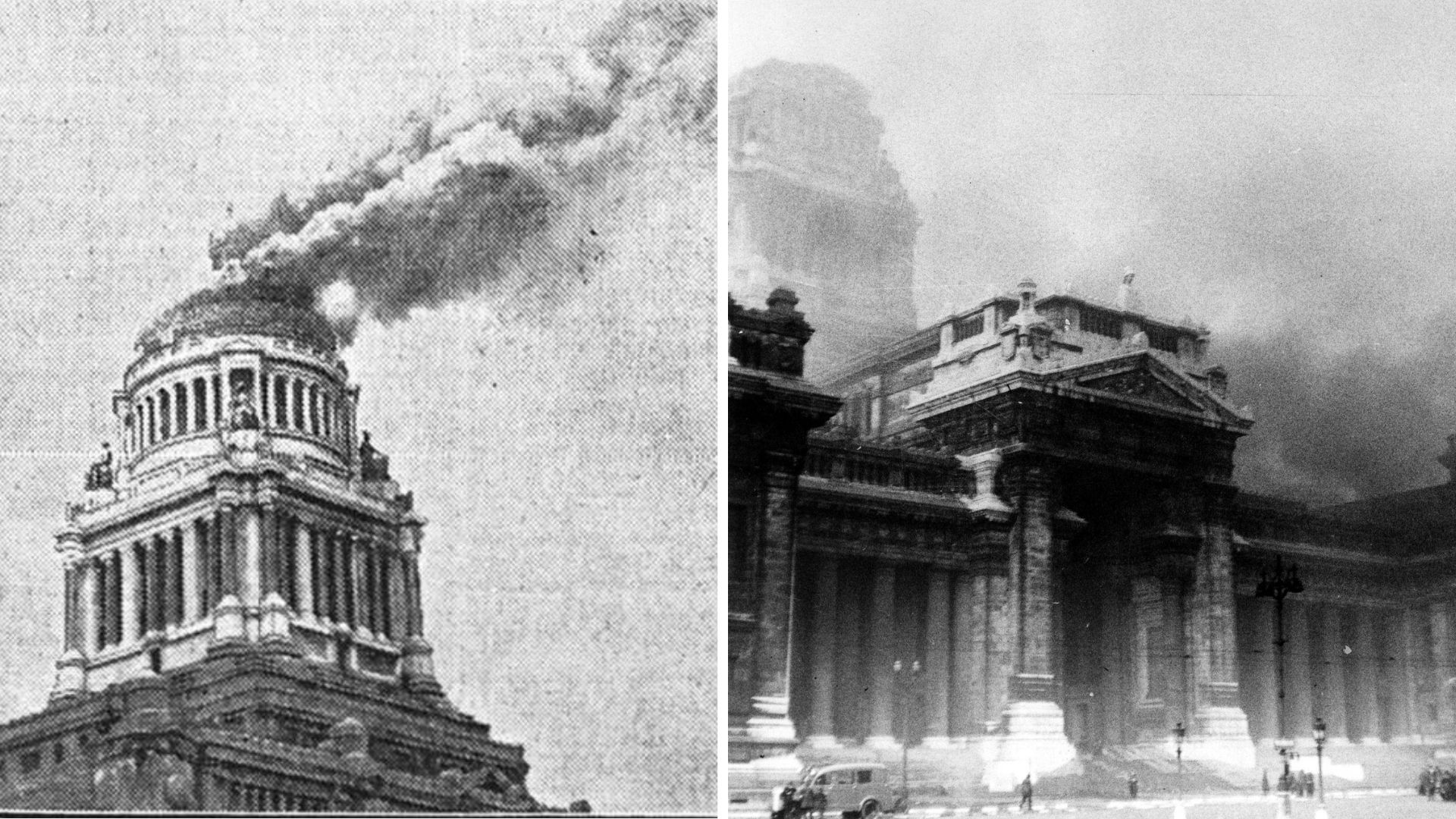On this day, 3 September 1944, at around half past noon bewildered Brussels residents spotted columns of smoke streaming out of the Palais de Justice, a final goodbye present from the fleeing Nazi army which precipitated the Liberation of Brussels.
A thick plume rose into the sky from the cupola. Like the monumental law court itself, the tumultuous fire was visible from every angle of the city. The intensity of the blaze was rapidly melting the metal dome. A series of explosions were later heard from inside the building, followed by the intensification of the fire.
On the ground, the shrills of sirens and screaming, bellowing people created panic. While the fire at such an iconic landmark projected fear into every Brussels citizen, many residents still crowded the buzzing streets around the burning Palais.
The force of these explosions blew out the palace’s windows, and eventually the majestic dome collapsed while furious ripples of fire engulfed the inside.
Writing a memoir of that day, the young Bruxellois Edouard Renier described coming out of a bookshop with his older brother to see the Palais cupola– about one kilometre away – in flames.
The imposing building, at one time the largest law court of its kind in the world, felt as if it could crumble on them at any moment. "My brother didn’t have to order me to run for home; I beat him to our building, running the fastest kilometre I ever ran in my life," his memoir reads.
While the fire imposed itself over the city, there was a flurry of movement in every street as people came out to help extinguish the fire.
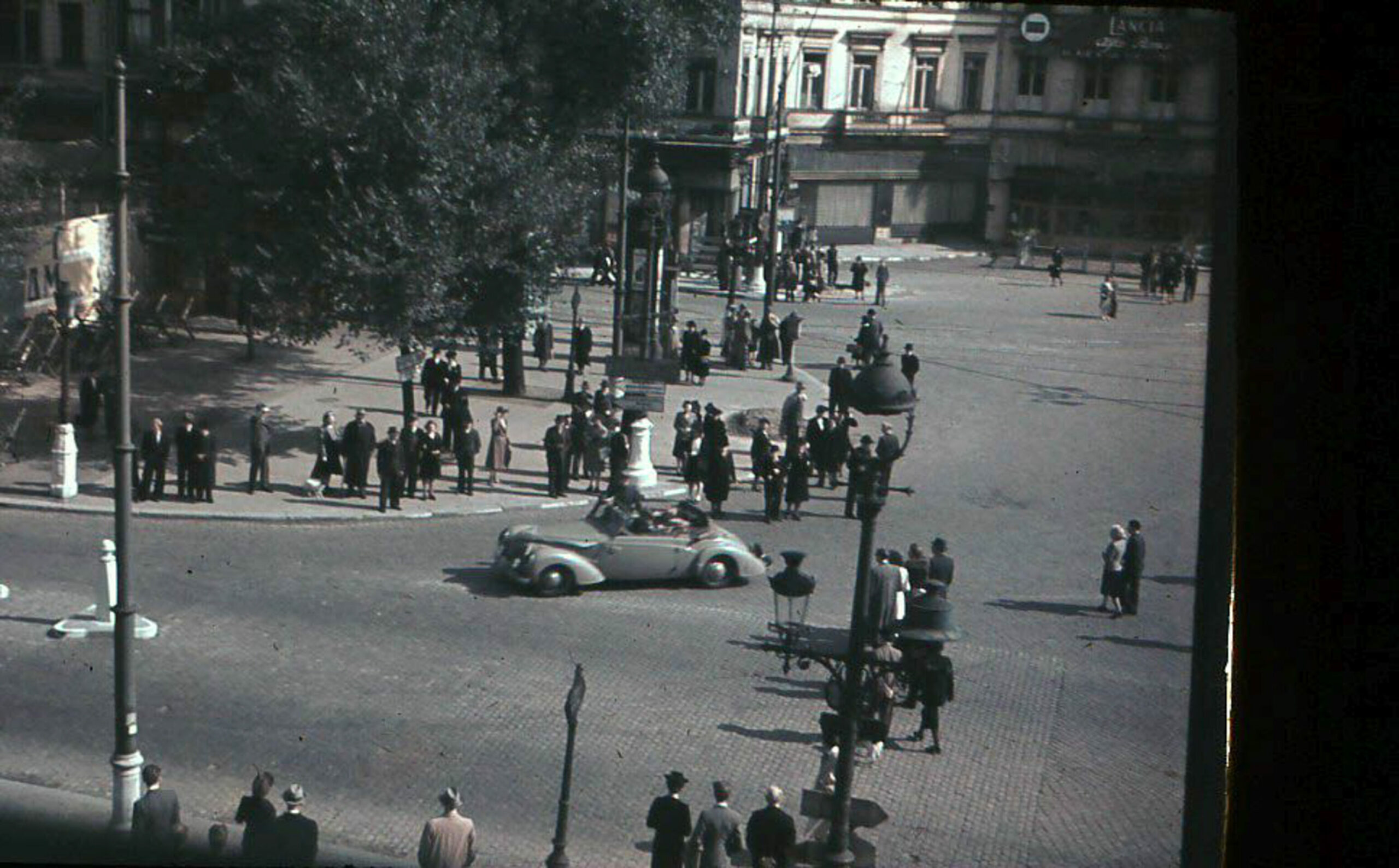
This handout picture, distributed by the War Heritage Institute (WHI) shows Germans leaving the city of Brussels during the Second World War. Credit: Belga Archives / CegeSoma / WHI
In the background, German soldiers were also racing around with a sense of urgency. Brussels had suffered greatly under four years of Nazi occupation – but the wheels of the Third Reich were finally coming off, as they found any means to escape the city.
"These Germans went by on bicycles, but the bicycles didn’t have any tires." recalled Saint-Gilloise Gabrielle Tedder-Douat, 17 at the time, whose memories were recently shared by the Brussels branch of the Royal British Legion. "They’d looted them … and were trying to get out of Brussels," she said.
Palace plot
A few days earlier on 1 September 1944, the Belgian capital had known the Allies were on their way, but for months, the question on everyone’s lips was: when?
Around 200 to 250 German soldiers had occupied the Palais de Justice, making the most of the commanding view of the city by setting up radio and observation posts for any sightings of the oncoming Allied army.
The next day, Allied troops crossed into Belgium through Hainault, followed by a rapid 73-mile advance towards Brussels on 3 September, which had taken the Germans by surprise and forced a much hastier retreat.
The majority of Nazi soldiers stationed inside the Palais de Justice had, by this point, also abandoned their positions, leaving only about 100 behind. Ordered to evacuate, passersby noticed a flurry of activity on the palace’s roof as the Germans were seen pouring flammable liquid all over the building and setting it ablaze before escaping.
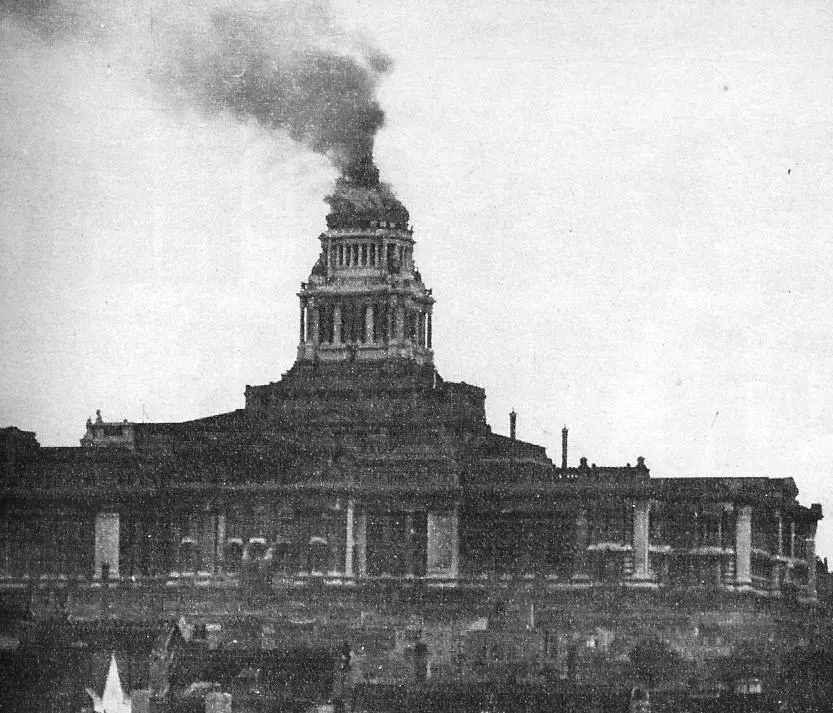
Palais de Justice on fire in 1944.
"From our flat in Rue Antoine Bréart [Saint-Gilles] you could see the Palais de Justice was [still] on fire … it was a terrible sight, very frightening. I went out … I suppose just to see what was going on," 17-year-old Douat recalled of the day's events.
Fire brigades rushed to the scene but were quickly overwhelmed by the scale of the blaze. Many firefighters were injured while trying to tame the fire. Smoke would continue to billow out of the cupola for the next two days.
“We saw the column of smoke from Woluwe [Saint-Lambert]! As soon as the Germans left, the whole population of the surrounding area lent a hand to put out the fire,” recounted Edgard Denis, who later joined the famous Brigade Piron, in his testimony.
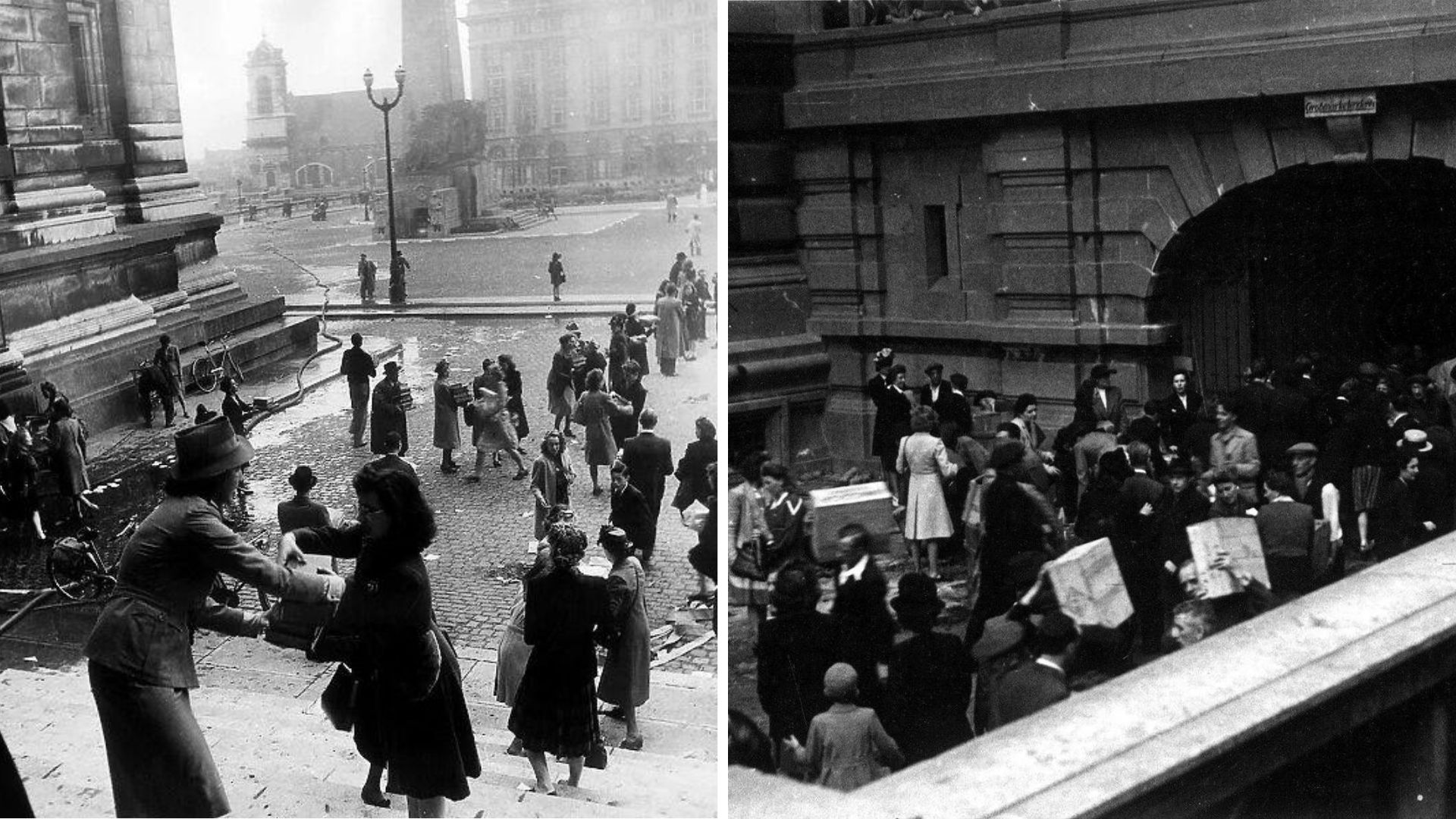
Brussels residents trying to save the archives (left); while others helping themselves to the contents of the basement left behind by the Germans (right). Credit: CegeSoma
The main structure was left largely undamaged, but the show-piece dome had melted and the library, the clerk's office of the Commercial Court and the Court of Assizes, had all been very badly damaged, destroying many precious artefacts, tapestries, furniture and historical documents.
A human chain of Brussels residents was created, extending from the staircase of the inner hall and going across the Place Poelaert. First passing buckets of water, the chain subsequently began retrieving valuable documents and books stored inside.
The extensive food, wine and alcohol supply left behind by the Germans in the basement was looted, or as most other accounts put it, "liberated".
Symbol of justice
So why had the Nazis attempted to burn down this man-made monolith? Deep inside the vaults and fortified rooms of the palace, the Nazis (including the Gestapo) had housed its records.
Following the retreat order, they now sought to burn and dispose of all evidence, assisted by the Flemish collaborators VNV and their Francophone counterparts, the Rexist party.

The intensified fire at Palais de Justice on 3 September 1944. Credit: CegeSoma
"All the documents relating to the patriots and resistance fighters disappeared, as did what had happened in the cellars of the Palais," Denis had added in his testimony.
Many, however, believed that the fire was an act of retribution against the people of Brussels, a final petty act of revenge against the uncollaborative local population.
The newly-reclaimed Le Soir (which had been taken over by the occupiers during the war), described the "heavy price" paid by the Palais de Justice on 17 September 1944, describing its "charred walls, ripped open ceilings and shattered columns."
"The Palais de Justice will appear for a long time, to all those who come towards it, as the pathetic reminder of Nazi rage... that was savagely relentless against one of the most peaceful peoples on earth."
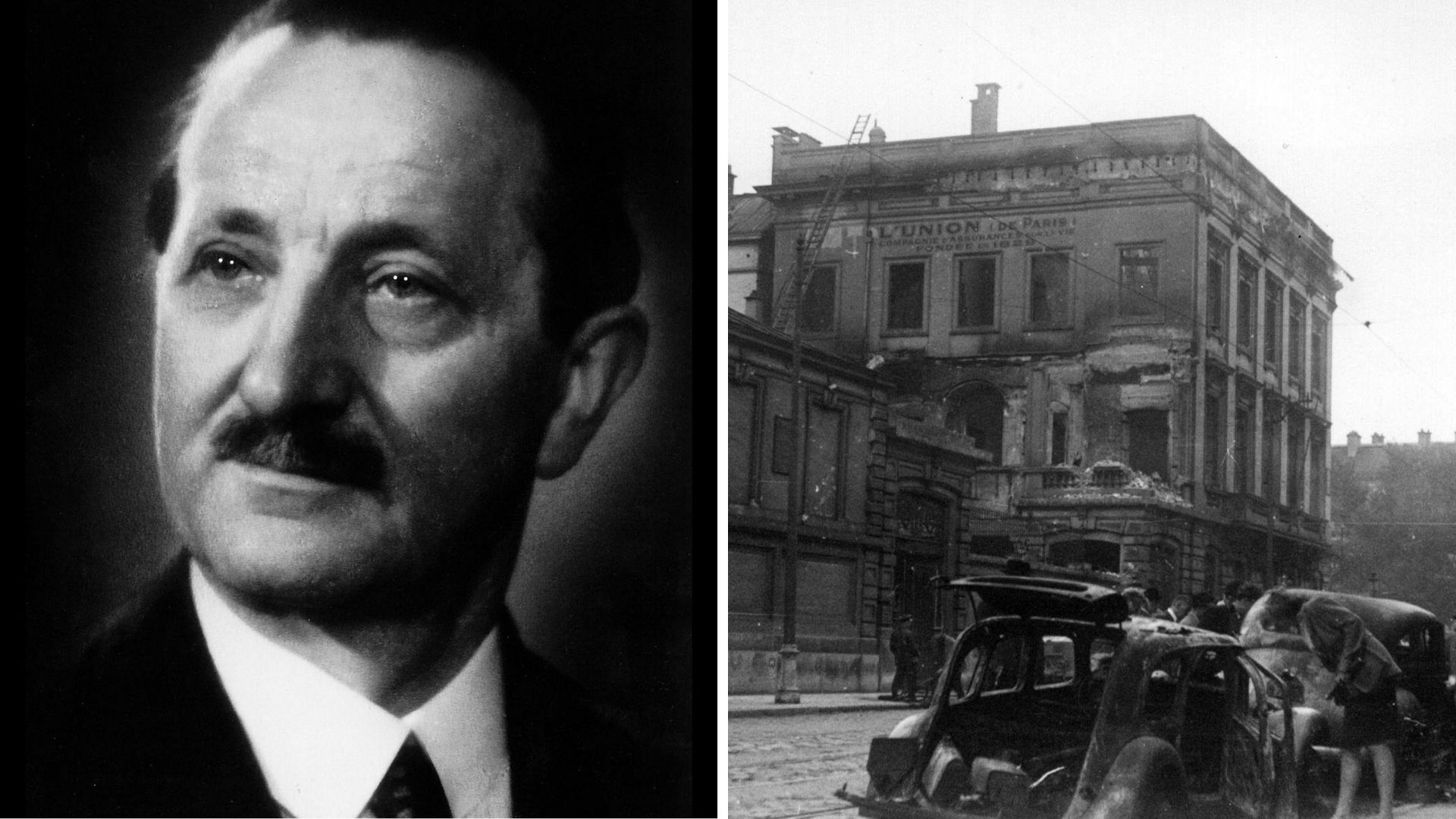
Louis Braffort (left), assassinated by the occupation; burned cars and buildings in the Rue de la Loi, Brussel, during the war. Credit: Creative Commons (left) / Belga Archives / CegeSoma / WHI (right)
The Belgian daily also paid tribute to the role of the Palais de Justice as a hotbed of resistance and symbol of freedom, notably in the struggle taken on by the entire judicial family who paid a heavy price throughout the occupation.
This was maybe best exemplified by the entrance portico of the palace having a hidden radio – ironically nicknamed Radio Vestiaire – which transmitted the "comforting" sounds of BBC and Radio Brazzaville, helping people keep the belief that justice was on its way.
However, lawyers and judges were frequently subjected to arrests, harassment, searches and executions. The Palais de Justice’s President of the Bar, Louis Braffort, was assassinated by Rexists a week before the fire, after having sent no less than 25 protests to the German military governor, General von Falkenhausen since the start of the occupation.
Braffort famously once said: "Expecting Belgian lawyers to stop being independent would be the same as asking them to stop being themselves."
Liberation of Brussels
Shortly before 20:00 on 3 September while the fire was still burning, the British Second Army entered Brussels and paraded through the city to sheer elation from the Belgian population.
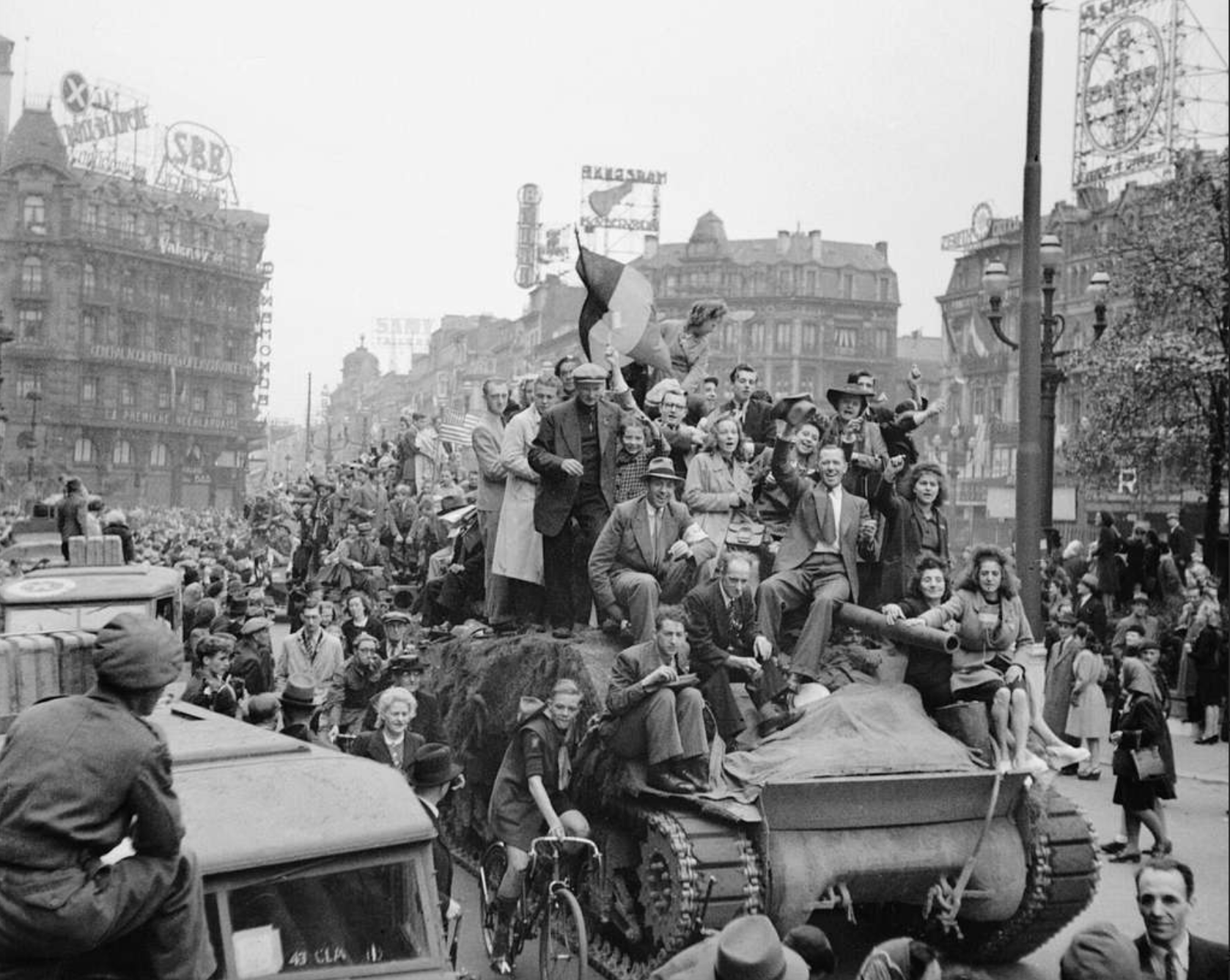
Citizens of Brussels ride on British tanks through the city. Credit: Imperial War Museums
"I went on a stroll with my mother to see the British troops at the Porte de Hal, near our home. There was a throng, the tanks could barely advance through the chanting, happy crowd and I couldn’t see so much of it because I was too small," recounted young Edouard Renier.
Emblematic scenes of seas of people greeting the liberators with tanks carrying smiling Belgians with Belgian and Allied flags being vigorously waved around. Doon Campbell, Reuters special correspondent wrote "It is pure hysteria here".
For its reconstruction years later, the Palais de Justice would be dressed for the first time with metal scaffolding. La Libre Belgique wrote in September 1947: "In three days, [the scaffolding] has grown to the point where there is no longer any doubt: they are definitely starting to rebuild the dome of the Palais."
Luckily, all damaged parts of the Palais de Justice were fully reconstructed by 1952, with a taller dome, resolving a previous criticism of its destroyed predecessor – and no scaffolding.
But 80 years ago today, the initial terror of the city’s inhabitants at the Palais de Justice fire eventually gave way to joy and jubilation. The wretched flames emanating from the "crown of Brussels" signified one thing: the Nazis were escaping. Brussels was liberated.
Check out the full testimonies of Gabrielle Tedder-Douat and Edourd Renier from the Liberation of Brussels.
"Today in History" is a historical series brought to you by The Brussels Times, aiming to take you on a trip down memory lane for newcomers and Belgians alike, written and compiled by Ugo Realfonzo.

